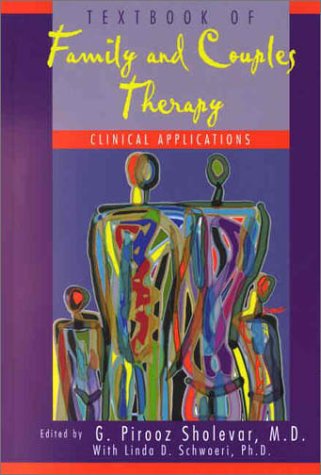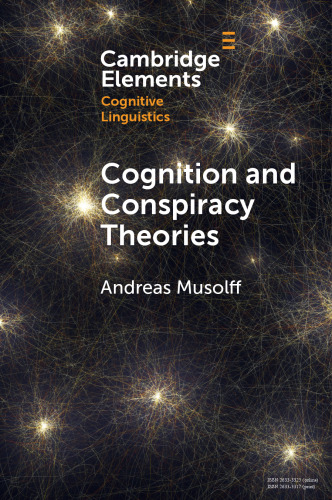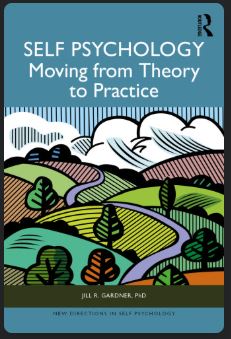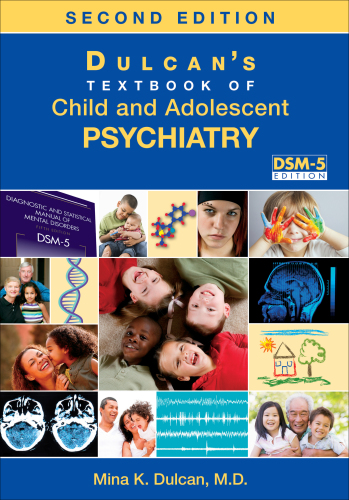Family theory is a special theoretical and clinical orientation that views hu- man behavior and psychiatric disturbances in their interpersonal context (Lansky 1989). This orientation is most apparent in the practice of family therapy, which is an umbrella term for a number of clinical practices based on the notion that psychopathology resides in the family system rather than individuals. Interventions are designed to effect change in the family rela- tionship system rather than in the individual (Bell 1975; Minuchin 1974a; Olson 1970; Shapiro 1966). Family theory considers family as an interper- sonal system with cybernetic qualities. The relationships among the com- ponents of the system are nonlinear (or circular); the interactions are cyclic rather than causative. There are complex interlocking feedback mecha- nisms and patterns of interaction among the members of the system that repeat themselves sequentially. Any symptom can be viewed simply as a particular type of behavior functioning as a homeostatic mechanism that regulates family interactions (Jackson 1965; Minuchin et al. 1975). The system is nonsummative and includes the individuals as well as their interactions (Olson 1970). A person’s problems cannot be evaluated 4 Textbook of Family and Couples Therapy or treated apart from the context in which they occur and the functions that they serve. This notion further implies that an individual cannot be expected to change unless the family system changes (Haley 1962). Therefore, the treatment addresses behavioral dysfunctions as a manifestation of distur- bances within the entire family relational system; the role of the total family in aiding or in sabotaging treatment is the focus, even when a distinct, diag- nosable psychiatric illness is present in one of the family members. Family therapy as a psychotherapeutic modality has the following goals (Steinglass 1995): 1. Exploring the interactional dynamics of the family and its relationship to psychopathology 2. Mobilizing the family’s internal strength and functional resources 3. Restructuring the maladaptive interactional family styles 4. Strengthening the family’s problem-solving behavior In the 1970s and 1980s, the field of family therapy viewed itself as pre- eminent among diverse therapeutic approaches, particularly by focusing on its own unique promise and the limitations of other approaches. In the 1990s, the field reached a level of maturity that also recognized the unique contributions of other intervention models, the complexities of human be- havior and adaptation, and the limitations of the family approach. This maturation has helped family therapy to assume a responsible and leading role in the creation of multisystemic and multimodal approaches to many disorders such as alcoholism and substance abuse, medical illness, and the major mental disorders described in many chapters in this volume.
چکیده فارسی
نظریه خانواده یک جهت گیری نظری و بالینی خاص است که رفتار انسان و اختلالات روانپزشکی را در زمینه بین فردی آنها می بیند (لانسکی 1989). این جهتگیری در عمل خانوادهدرمانی آشکار است، که اصطلاحی فراگیر برای تعدادی از اقدامات بالینی است که بر اساس این تصور است که آسیبشناسی روانی در سیستم خانواده قرار دارد تا افراد. مداخلات برای ایجاد تغییر در سیستم روابط خانوادگی و نه در فرد طراحی شده اند (بل 1975؛ مینوچین 1974a؛ اولسون 1970؛ شاپیرو 1966). نظریه خانواده خانواده را یک سیستم بین فردی با ویژگی های سایبرنتیک می داند. روابط بین اجزای سیستم غیرخطی (یا دایره ای) است. این فعل و انفعالات به جای علتی، چرخه ای هستند. مکانیسمهای بازخورد پیچیده و الگوهای تعاملی بین اعضای سیستم وجود دارد که بهطور متوالی تکرار میشوند. هر علامتی را می توان به سادگی به عنوان نوع خاصی از رفتار در نظر گرفت که به عنوان یک مکانیسم هموستاتیک عمل می کند که تعاملات خانوادگی را تنظیم می کند (جکسون 1965؛ مینوچین و همکاران 1975). این سیستم غیر خلاصه است و شامل افراد و همچنین تعاملات آنها می شود (اولسون 1970). مشکلات یک فرد را نمی توان ارزیابی کرد یا جدا از زمینه ای که در آن رخ می دهد و کارکردهایی که انجام می دهد، درمان کرد. این مفهوم همچنین بیانگر این است که نمی توان از یک فرد انتظار داشت که تغییر کند مگر اینکه سیستم خانواده تغییر کند (هیلی 1962). بنابراین، درمان به اختلالات رفتاری به عنوان تظاهراتی از اختلالات در کل سیستم روابط خانوادگی می پردازد. نقش کل خانواده در کمک یا خرابکاری در درمان تمرکز است، حتی زمانی که یک بیماری روانپزشکی مشخص و قابل تشخیص در یکی از اعضای خانواده وجود داشته باشد. خانواده درمانی به عنوان یک روش روان درمانی دارای اهداف زیر است (Steinglass 1995): 1. بررسی پویایی های تعاملی خانواده و ارتباط آن با آسیب شناسی روانی 2. بسیج نیروی درونی خانواده و منابع عملکردی 3. بازسازی سبک های تعاملی ناسازگار خانواده 4. تقویت رفتار حل مسئله خانواده در دهه های 1970 و 1980، حوزه خانواده درمانی خود را در میان رویکردهای درمانی متنوع، به ویژه با تمرکز بر وعده منحصر به فرد خود و محدودیت های دیگر رویکردها، برجسته می دانست. در دهه 1990، این رشته به سطحی از بلوغ رسید که نقش منحصر به فرد سایر مدلهای مداخله، پیچیدگیهای رفتار و سازگاری انسانی و محدودیتهای رویکرد خانواده را نیز به رسمیت شناخت. این بلوغ به خانواده درمانی کمک کرده است تا نقشی مسئول و پیشرو در ایجاد رویکردهای چند سیستمی و چندوجهی برای بسیاری از اختلالات مانند اعتیاد به الکل و سوءمصرف مواد، بیماری های پزشکی و اختلالات روانی عمده ای که در بسیاری از فصل های این جلد شرح داده شده است، ایفا کند. >
ادامه ...
بستن ...
Author(s): G. Pirooz Sholevar, Linda D. Schwoeri
Year: 2003
ISBN: 0880485183,9780880485180,9781585627523
ادامه ...
بستن ...
Contents
Contributors. . . . . . . . . . . . . . . . . . . . . . . . . . . . . . . . . . . . . . . . . . . . . . . . . .xiii
Part I
Introduction
Chapter 1
Family Theory and Therapy: An Overview . . . . . . . . . . . . . . . . . . . . . . . . . . . 3
G. Pirooz Sholevar, M.D.
Part II
Family Therapy: Theory and Techniques
Introduction to Family Theories . . . . . . . . . . . . . . . . . . . . . . . . . . . . . . . . . . 29
G. Pirooz Sholevar, M.D.
Chapter 2
Structural Family Therapy . . . . . . . . . . . . . . . . . . . . . . . . . . . . . . . . . . . . . . . 35
H. Charles Fishman, M.D., and Tana Fishman, D.O.
Chapter 3
Constructing Therapy: From Strategic, to Systemic, to
Narrative Models . . . . . . . . . . . . . . . . . . . . . . . . . . . . . . . . . . . . . . . . . . . . . . 55
Scott W. Browning, Ph.D., and Robert-Jay Green, Ph.D.
Chapter 4
Psychodynamic Family Therapy . . . . . . . . . . . . . . . . . . . . . . . . . . . . . . . . . . . 77
G. Pirooz Sholevar, M.D., and Linda D. Schwoeri, Ph.D.
Chapter 5
Multigenerational Family Systems Theory of
Bowen and Its Application . . . . . . . . . . . . . . . . . . . . . . . . . . . . . . . . . . . . . . 103
Michael Kerr, M.D.
Chapter 6
Contextual Therapy . . . . . . . . . . . . . . . . . . . . . . . . . . . . . . . . . . . . . . . . . . . 127
Catherine Ducommun-Nagy, M.D., and Linda D. Schwoeri, Ph.D.
Chapter 7
Behavioral Family Therapy . . . . . . . . . . . . . . . . . . . . . . . . . . . . . . . . . . . . . . 147
Ian R. H. Falloon, M.D.
Chapter 8
Psychoeducational Family Intervention . . . . . . . . . . . . . . . . . . . . . . . . . . . . 173
Linda D. Schwoeri, Ph.D., and G. Pirooz Sholevar, M.D.
Chapter 9
Social Network Intervention . . . . . . . . . . . . . . . . . . . . . . . . . . . . . . . . . . . . 193
Ross V. Speck, M.D.
Chapter 10
Gender-Sensitive Family Therapy . . . . . . . . . . . . . . . . . . . . . . . . . . . . . . . . 203
Linda D. Schwoeri, Ph.D., G. Pirooz Sholevar, M.D., and George S. Villarose, M.A.
Chapter 11
Techniques of Family Therapy . . . . . . . . . . . . . . . . . . . . . . . . . . . . . . . . . . . 225
G. Pirooz Sholevar, M.D., and Linda D. Schwoeri, Ph.D.
Family Theories: Conclusion . . . . . . . . . . . . . . . . . . . . . . . . . . . . . . . . . . . . 251
G. Pirooz Sholevar, M.D.
Part III
Family Assessment
Chapter 12
Initial and Diagnostic Family Interviews . . . . . . . . . . . . . . . . . . . . . . . . . . . . 257
G. Pirooz Sholevar, M.D.
Chapter 13
Family Assessment . . . . . . . . . . . . . . . . . . . . . . . . . . . . . . . . . . . . . . . . . . . . 277
Bruce D. Forman, Ph.D., Jodi Aronson, Ph.D., and Mark P. Combs, Ph.D.
Chapter 14
The Family Life Cycle: A Framework for
Understanding Family Development . . . . . . . . . . . . . . . . . . . . . . . . . . . . . . 303
Joan Zilbach, M.D.
Chapter 15
Functional and Dysfunctional Families . . . . . . . . . . . . . . . . . . . . . . . . . . . . . 317
W. Robert Beavers, M.D.
Chapter 16
Diagnosis of Family Relational Disorders . . . . . . . . . . . . . . . . . . . . . . . . . . 341
David J. Miklowitz, Ph.D., and John F. Clarkin, Ph.D.
Part IV
Family Therapy With Children and Adolescents
Chapter 17
Family Therapy With Children and Adolescents: An Overview. . . . . . . . . 367
G. Pirooz Sholevar, M.D.
Chapter 18
Family Therapy With Children: A Model for
Engaging the Whole Family . . . . . . . . . . . . . . . . . . . . . . . . . . . . . . . . . . . . . 381
Richard Chasin, M.D., and Tanya B. White, Ph.D.
Chapter 19
Parent Management Training . . . . . . . . . . . . . . . . . . . . . . . . . . . . . . . . . . . . 403
Ellen Harris Sholevar, M.D.
Part V
Couples Therapy
Chapter 20
Couples Therapy: An Overview . . . . . . . . . . . . . . . . . . . . . . . . . . . . . . . . . 417
G. Pirooz Sholevar, M.D.
Chapter 21
Psychodynamic Couples Therapy. . . . . . . . . . . . . . . . . . . . . . . . . . . . . . . . . 439
Derek C. Polonsky, M.D., and Carol C. Nadelson, M.D.
Chapter 22
Behavioral Couples Therapy . . . . . . . . . . . . . . . . . . . . . . . . . . . . . . . . . . . . 461
Steven L. Sayers, Ph.D., and Richard E. Heyman
Chapter 23
The Divorcing Family: Characteristics and Interventions . . . . . . . . . . . . . . 501
G. Pirooz Sholevar, M.D., and Linda D. Schwoeri, Ph.D.
Chapter 24
The Remarried Family: Characteristics and Interventions . . . . . . . . . . . . . 523
Emily B. Visher, Ph.D., and John S. Visher, M.D.
Chapter 25
Marital Enrichment in Clinical Practice . . . . . . . . . . . . . . . . . . . . . . . . . . . . 539
Paul Giblin, Ph.D., and Mark P. Combs, Ph.D.
Chapter 26
Sex Therapy at the Turn of the Century:
New Awareness and Response . . . . . . . . . . . . . . . . . . . . . . . . . . . . . . . . . . 559
Linda D. Schwoeri, Ph.D., G. Pirooz Sholevar, M.D., and Mark P. Combs, Ph.D.
Part VI
Family Therapy With Different Disorders
Chapter 27
Family Variables and Interventions in Schizophrenia . . . . . . . . . . . . . . . . . . 585
David J. Miklowitz, Ph.D., and Martha C. Tompson, Ph.D.
Chapter 28
Depression and the Family: Interpersonal Context and
Family Functioning . . . . . . . . . . . . . . . . . . . . . . . . . . . . . . . . . . . . . . . . . . . . 619
G. Pirooz Sholevar, M.D., Linda D. Schwoeri, Ph.D., and Howard Jarden, Ph.D.
Chapter 29
Family Intervention and Psychiatric Hospitalization . . . . . . . . . . . . . . . . . . 637
G. Pirooz Sholevar, M.D., Ira D. Glick, M.D., and Ellen Harris Sholevar, M.D.
Chapter 30
National Alliance for the Mentally Ill (NAMI) and Family Psychiatry:
Working Toward a Collaborative Model . . . . . . . . . . . . . . . . . . . . . . . . . . 657
G. Pirooz Sholevar, M.D., and Linda D. Schwoeri, Ph.D.
Chapter 31
Alcoholic and Substance-Abusing Families. . . . . . . . . . . . . . . . . . . . . . . . . . 671
G. Pirooz Sholevar, M.D., and Linda D. Schwoeri, Ph.D.
Chapter 32
Family Intervention With Incest. . . . . . . . . . . . . . . . . . . . . . . . . . . . . . . . . . 695
G. Pirooz Sholevar, M.D., and Linda D. Schwoeri, Ph.D.
Chapter 33
Family Therapy With Personality Disorders . . . . . . . . . . . . . . . . . . . . . . . . 715
G. Pirooz Sholevar, M.D., and Linda D. Schwoeri, Ph.D.
Chapter 34
Impact of Culture and Ethnicity on Family Interventions . . . . . . . . . . . . . . 725
Linda D. Schwoeri, Ph.D., G. Pirooz Sholevar, M.D., and Mark P. Combs, Ph.D.
Chapter 35
Medical Family Therapy . . . . . . . . . . . . . . . . . . . . . . . . . . . . . . . . . . . . . . . . 747
G. Pirooz Sholevar, M.D., and Christoph Sahar, M.D.
Part VII
Research in Family and Couples Therapy
Chapter 36
The State of Family Therapy Research: A Positive Prognosis . . . . . . . . . . . 771
John F. Clarkin, Ph.D., Daniel Carpenter, Ph.D., and Eric Fertuck, Ph.D.
Chapter 37
Couples Therapy Research: Status and Directions . . . . . . . . . . . . . . . . . . . 797
Susan M. Johnson, Ph.D.
Chapter 38
Conclusion and Future Directions. . . . . . . . . . . . . . . . . . . . . . . . . . . . . . . . 815
G. Pirooz Sholevar, M.D.
References . . . . . . . . . . . . . . . . . . . . . . . . . . . . . . . . . . . . . . . . . . . . . . . . . . 821
Index . . . . . . . . . . . . . . . . . . . . . . . . . . . . . . . . . . . . . . . . . . . . . . . . . . . . . . . 907
ادامه ...
بستن ...










